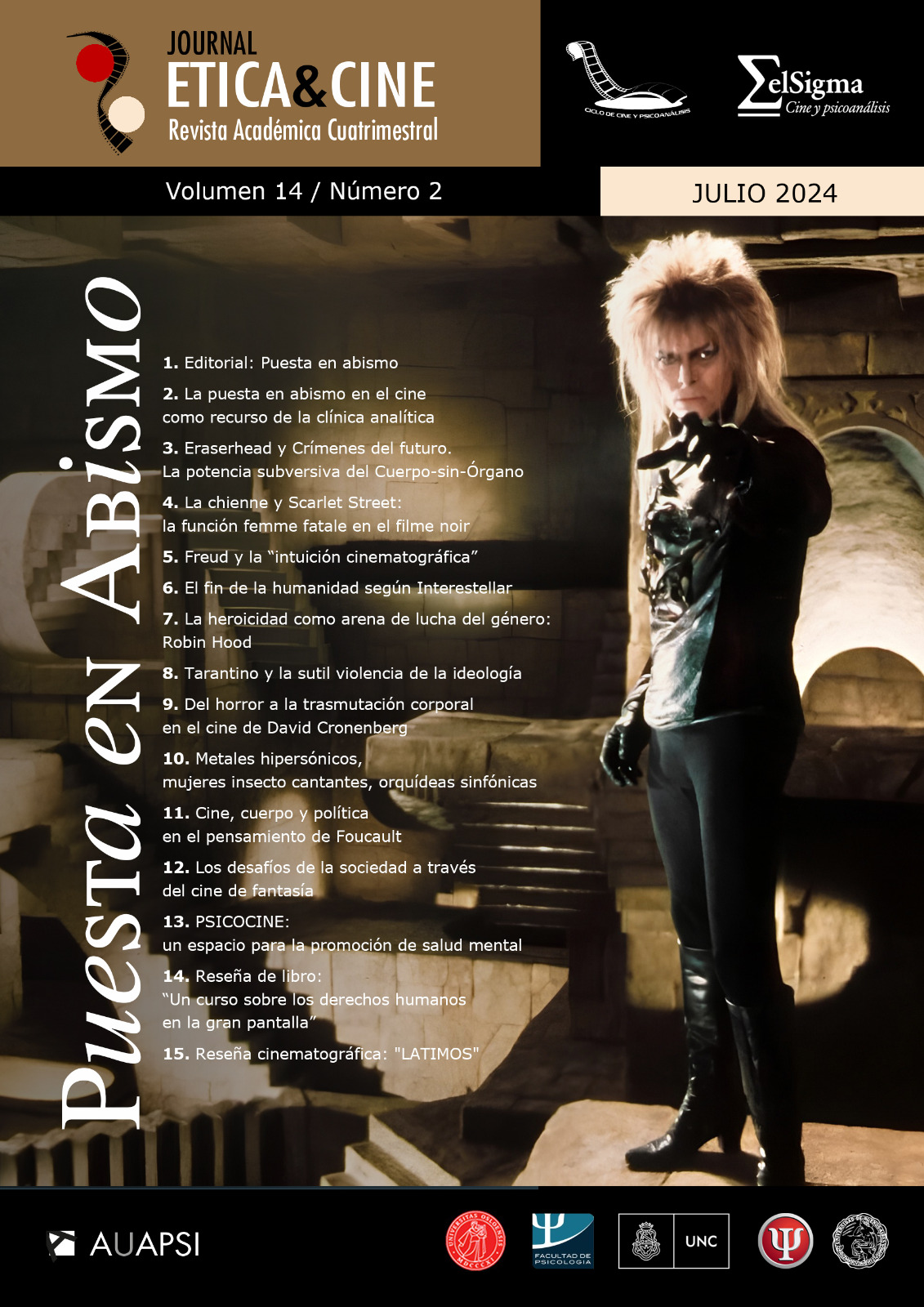Book Review: A course on human rights on the big screen
DOI:
https://doi.org/10.31056/2250.5415.v14.n2.45767Keywords:
Law and cinema, Human rights, Legal cinema, Social sciencesAbstract
The aim of this paper is to comment the work Human Rights in cinema, written by Benjamín Rivaya García. The book itself is an original exercise of analysis on the presence that human rights have had in cinematographic narration throughout history. As its author explains to us, the objectives pursued by the work are to explain the particular way in which cinema relates to the legal world, identify the ideological elements that are present in film discourse and claim the indisputable role that cinema has today as an educational resource. Its reading is especially revealing when it addresses all these broad questions, which are not always treated according to the importance that undoubtedly belongs to them. Here we will try to make a brief exposition and comment on the main themes discussed in the book, with the intention of promoting a different and pleasant approach to cinematographic art.
References
Bayer, R. (2014). Historia de la estética. Fondo de Cultura Económica.
Bobbio, N. (1991). El tiempo de los derechos. Editorial Sistema.
Dostoievski, F. (2001). Memorias de la casa muerta. Alba Editorial.
Engels, F. y Marx, K. (2006). Ludwig Feuerbach y el fin de la filosofía clásica alemana. Fundación Federico Engels.
Lee, H. (2015). Matar a un ruiseñor. Penguin.
Rivaya García, B. (2024). Los derechos humanos en el cine. Palestra Editores.
Rivaya García, B. y de Cima, P. (2004). Derecho y cine en 100 películas. Tirant lo Blanch.
Rivaya García, B. y Fernández González-Irún, P. (2012). El Derecho en imágenes. Sidney Lumet (1924-2011). Intersexiones, n.º 3, 19-47. https://es.scribd.com/document/142794799/Rivaya-y-Fernandez-El-derecho-en-imagenes-Lumet-12-hombres-sin-piedad-2012
Sánchez Noriega, J. L. (2001). Las adaptaciones literarias al cine: un debate permanente. Comunicar: Revista Científica de Comunicación y Educación, n.º 17, 65-69. https://doi.org/10.3916/C17-2001-09
Sartori, G. (1998). Homo Videns. La sociedad teledirigida. Taurus.
Steiner, G. (2002). Tolstói o Dostoievski. Ediciones Siruela.
Vargas Llosa, M. (2015). La verdad de las mentiras. Penguin.
Referencias filmográficas
Capra, F. (Director). (1938). You Can´t Take it with You [Película]. Columbia Pictures.
Griffith, D.W. (Director). (1915). The Birth of a Nation [Película]. David W. Griffith Corp.
Griffith, D.W. (Director). (1916). Intolerance [Película]. The Triangle Film Corporation y Wark Producing Corporation.
Lumet, S. (Director). (1957). 12 angy men [Película]. Metro-Goldwyn-Mayer y Orion-Nova Productions.
Mulligan, R. (Director). (1962). To Kill a Mockingbird [Película]. Pakula-Mulligan Production, Brentwood Production y Universal Pictures.
Sica, V. (Director). (1948). Ladri di biclette [Película]. Produzioni De Sica.
Sica, V. (Director). (1951). Miracolo a Milano [Película]. Produzioni De Sica y Ente Nazionale Industrie Cinematografiche.
Sica, V. (Director). (1952). Umberto D. [Película]. Rizzoli Film.
Vidor, K. (Director). (1949). The Fountainhead [Película]. Warner Bros.
Downloads
Published
Issue
Section
License
Copyright (c) 2024 Ética y Cine Journal

This work is licensed under a Creative Commons Attribution-ShareAlike 4.0 International License.
Los autores que publiquen en Ética y Cine Journal aceptan las siguientes condiciones:
Los autores/as conservan los derechos de autor © y permiten la publicación a Ética y Cine Journal, bajo licencia CC BY-SA / Reconocimiento - Reconocimiento-CompartirIgual 4.0 Internacional. La adopción de esta licencia permite copiar, redistribuir, comunicar públicamente la obra, reconociendo los créditos de la misma, y construir sobre el material publicado, debiendo otorgar el crédito apropiado a través de un enlace a la licencia e indicando si se realizaron cambios.

Este obra está bajo una licencia de Creative Commons Reconocimiento-CompartirIgual 4.0 Internacional.




